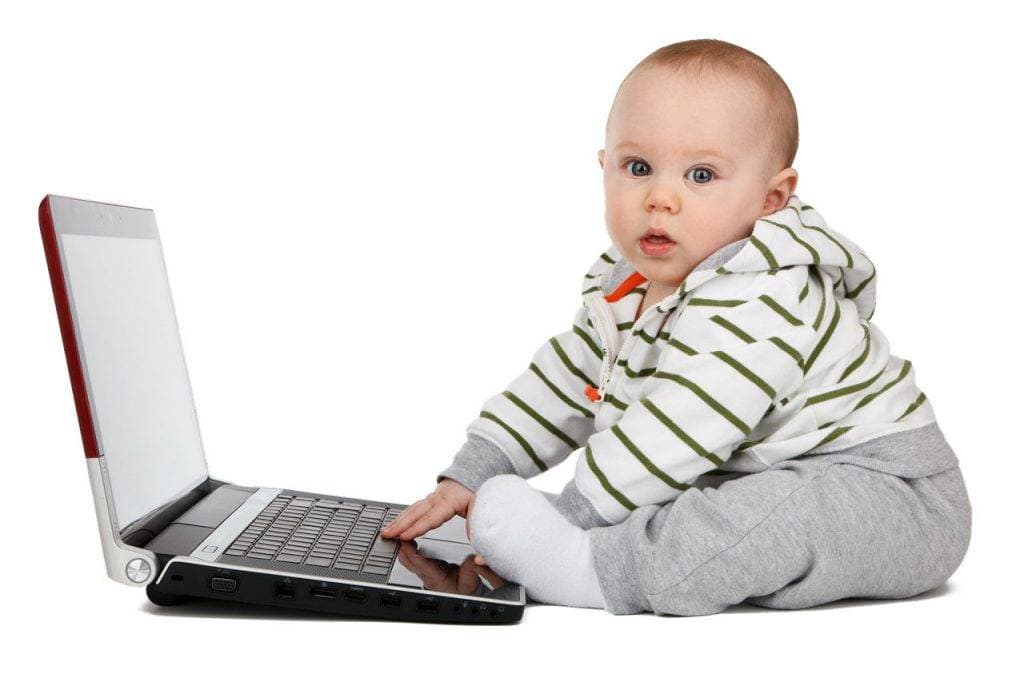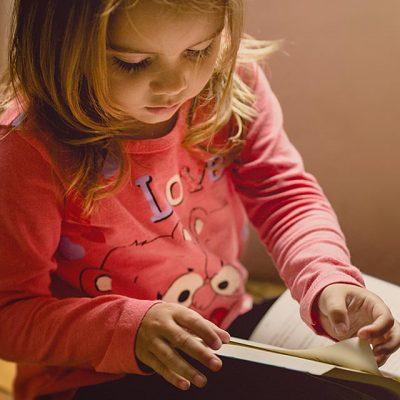It is important to watch your baby’s development to ensure they reach their milestones.
A child’s vision is a complex combination of the brain, the eyes and the vast array of nerves that connect them. At birth, this visual system is still immature and continues to develop throughout the child’s early years.
Clear vision is an integral part of a child’s healthy development.
Healthy eyes and good vision are vital components that enable successful achievement of many important milestones. Learning “how to see” and being able to interpret visual information to understand what is going on in the environment, are both crucial factors in successfully reaching the development of the visual system.
These developmental milestones begin in the infancy stage and are dependent on the strength of the visual skills. Visual skills, such as binocular vision, accurate eye movements, and the ability to change focus to see near and distant objects, are necessary for observing, imitating, learning, playing, and more.
When does vision development begin?
Vision development begins in the womb and continues throughout childhood and adolescence.
The development of a mature visual system is especially critical within the first six years of life.
The first six years of life is considered the “vulnerable period” because it is a time when the child’s development is most vulnerable to the effects of the various threats to their eye health and vision. Any change in vision or ocular health can inhibit a child from developing the necessary visual skills, and cause developmental delays.
Vision milestones according to age
The following is a timeline of some of the key visual age-based milestones, to provide a basic guideline for parents to know what to expect throughout their child’s development.
It is important to remember that each child is unique and may reach certain milestones at different ages.
Please note, this is ONLY a guideline, and should not be used to replace the consultation of an eye care professional.
Birth to 1 month
- Blinks in response to bright light
- Uncoordinated eye movements— may appear “crossed-eyed”
- Ability to stare at an object 8-10 inches away
- Stares at light or face
- Begins to track or follow moving objects
1 to 2 months
- Clear vision only for objects 10-12 inches away
- Stares at faces and black and white images
- Follows an object up to 90 degrees
- Watches parent closely
- Begins to develop tears
2 to 3 months
- Begins to notice familiar objects up to 12 inches away
- Examines own hands
- Follows faces, objects, and light
4 to 5 months
- Begins to reach for nearby objects, such as a hanging mobile
- Recognizes objects such as a bottle or pacifier
- Looks at self in mirror
5 to 7 months
- Develops full color vision
- Ability to see images and objects from few feet away
- Turns head to view objects
- Favors certain colors
- Touches mirror image of self
7 to 12 months
- Development of independent eye movements
- Sees smaller objects
- Development of depth perception
- Crawls to reach distant objects
- Plays peek-a-boo
- Watches and follows fast moving objects
12 to 18 months (1 to 1.5 years)
- Clear distance vision
- Depth perception for objects further than 2 feet away
- Refinement of eye movements
- Recognizes images of familiar objects
- Walks to interact with interesting items
- Recognizes self in mirror
18 to 24 months (1.5 to 2 years)
- Begins to focus on objects closer than 2 feet
- Clear distance vision
- Development of fine-motor skills
- Colors with crayons— attempting to draw straight lines or circles
- Identifies body parts —mouth, eyes, and hair, etc.
24 to 36 months (2 to 3 years)
- Improvement of close vision skills: convergence and focusing
- Development of binocular vision at all distances
- Can change focus from distance to near
- Improvement of depth perception
- Uses focusing to recognize shapes and objects
36 to 48 months (preschool)
- Distance vision nearing 20/20
- Clear and single vision up to few inches from face
- Development of gross-motor coordination
- Recognizes complex visual shapes and letters
- Identifies colors
48 to 72 months (school)
- Knows letters and some words
- Recognizes orientation of letters
- Begins reading
- Possesses a matured sense of depth perception
- Clear, single and comfortable vision at all distances
If you have any concerns about your child’s development, find an eye doctor near you that can examine your child.
SEE RELATED: Your Baby’s Vision Development
When should a child have an eye exam?
An infant’s eyes are examined by the neonatal pediatrician soon after birth to rule out any of the common postpartum eye diseases such as cataracts, infantile glaucoma and eye tumors.
The recommended schedule of eye exams for children includes:
- One visit between 6-12 months
- One visit between 2-3 years old
- One visit between 4-5 years old
- Annual visit, from 6 years and up
Young children may not report if they feel that something is wrong— simply because they don’t realize that something is wrong!
Schedule an eye exam as the sooner a vision problem is detected, the sooner it can be diagnosed and treated— resulting in increased positive outcomes.
A parent’s role in vision development
Parents play a vital role in their child’s healthy development of vision. It is therefore important for parents to:
- Watch for signs of a vision problem
- Schedule their first eye exam at around 6 months of age
- Follow your eye doctors advice on an appropriate schedule of eye exams
- Engage in parent-play age-appropriate activities that can stimulate your child’s vision, such as swing mobiles, soft toys and playful games
- Allow children to safely explore and interact with their natural environment, such as playing in a sandbox or climbing a tree
- Provide challenging physical experiences, such as riding a tricycle and catching balls
- Increase the visual demand of play and activities, such as sports and flashcards
If you think your child may not be responding to their environment appropriately, or you notice that your child is not reaching an important developmental milestone, schedule an eye exam to rule out any vision problems.
LEARN MORE: Guide to Visual Development
If an issue with the development of their visual system is detected, try not to worry— your eye doctor will advise you on the most appropriate treatment plan for your child, to facilitate the best possible way to help them achieve their visual developmental milestones.








